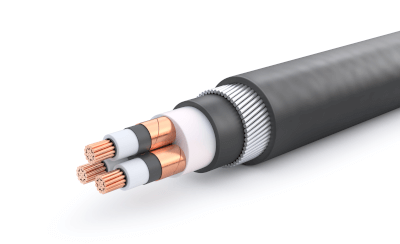What Is a Rubber Cabtyre Cable?
 Among cabtyre cables that can be moved while energized, rubber cabtyre cables are a type of cabtyre cable in which insulation and sheath are made of natural or synthetic rubber.
Among cabtyre cables that can be moved while energized, rubber cabtyre cables are a type of cabtyre cable in which insulation and sheath are made of natural or synthetic rubber.
Compared to vinyl cabtyre cables, these cables have superior resistance to impact and abrasion and are suitable for use outdoors or in harsh environments because they can be adapted to adverse weather conditions.
Currently, synthetic rubber is mainstream, and cabtyre cables made of natural rubber are gradually being replaced by synthetic rubber.
Uses of Rubber Cabtyre Cables
Due to their resistance to weather changes, cabtyre cables are mainly used outdoors in places where the power supply needs to be moved.
Also, due to their high oil resistance, they are used in harsh conditions such as factories where oil mist is scattered, tunneling machines, mines, and so on.
They are also used in places where it is exposed to high temperatures, such as in wiring from transformers to welding electrodes in arc welding machines due to their excellent heat resistance.
Uses of this cable are in mobile electrical equipment and wiring with voltages of 600 V or less.
Features of Rubber Cabtyre Cables
There are three types depending on the combination of rubber materials.
Those in which both the insulation and sheath are composed of natural rubber are called “CT,” and are not widely used today due to their low oil resistance.
“PNCT,” in which the insulator is composed of EP rubber and the sheath of chloroprene, is the most widely used and is characterized by high durability in harsh environments. PNCT is now the mainstream.
“RNCT”, in which only the insulation is composed of natural rubber, is also resistant to rain and grease.
In addition, rubber cabtyre cables are available in four types from Type 1 to Type 4, which are selected according to the environment in which they will be used.
Type 1 is only made of natural rubber, and is vulnerable to environmental changes, so it is now integrated into Type 2. Type 2 is the most commonly used low-voltage cable and can be used both indoors and outdoors. Type 4 has even higher abrasion resistance than Type 3 and is suitable for use under extreme conditions.